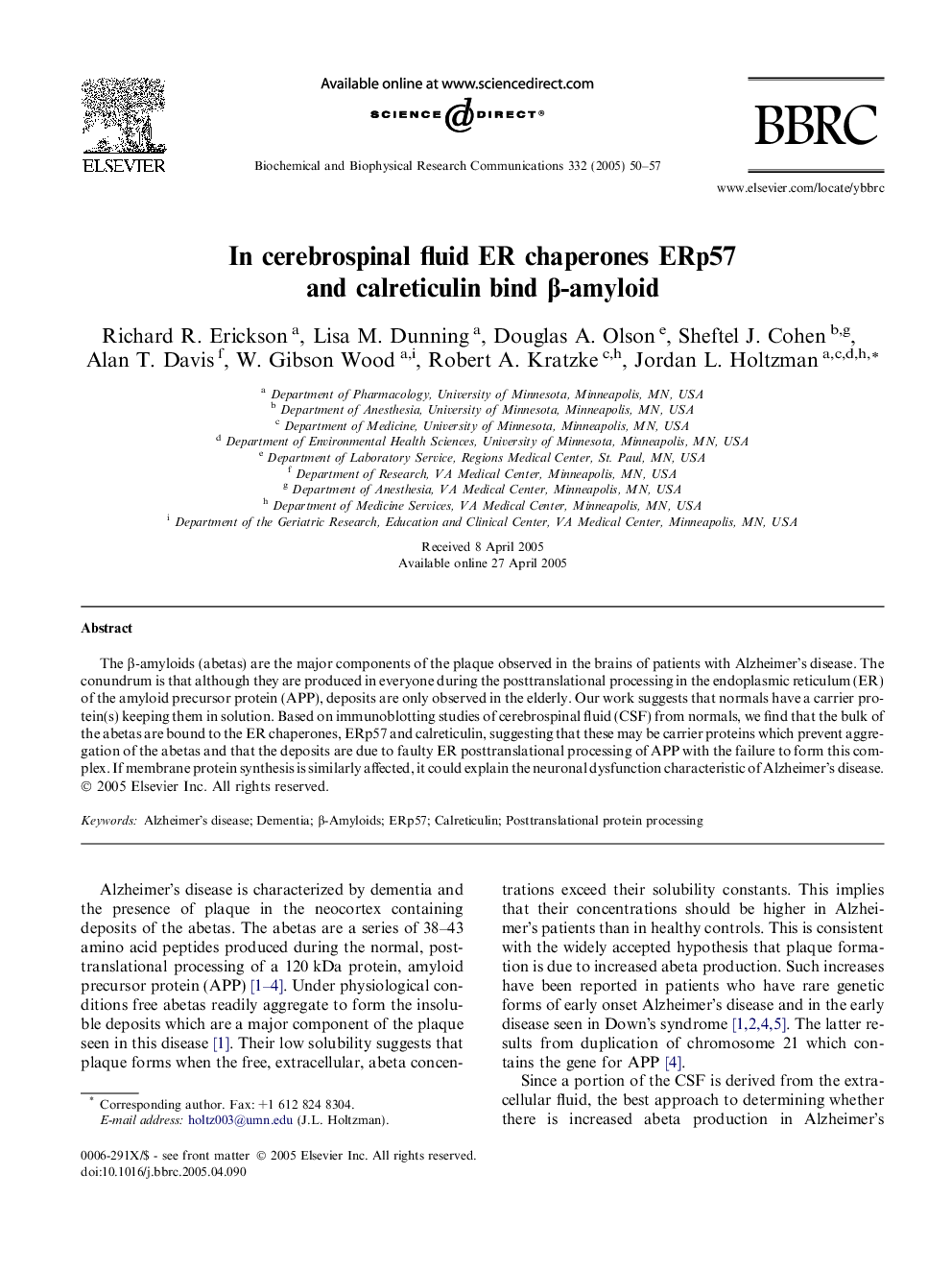| Article ID | Journal | Published Year | Pages | File Type |
|---|---|---|---|---|
| 10769869 | Biochemical and Biophysical Research Communications | 2005 | 8 Pages |
Abstract
The β-amyloids (abetas) are the major components of the plaque observed in the brains of patients with Alzheimer's disease. The conundrum is that although they are produced in everyone during the posttranslational processing in the endoplasmic reticulum (ER) of the amyloid precursor protein (APP), deposits are only observed in the elderly. Our work suggests that normals have a carrier protein(s) keeping them in solution. Based on immunoblotting studies of cerebrospinal fluid (CSF) from normals, we find that the bulk of the abetas are bound to the ER chaperones, ERp57 and calreticulin, suggesting that these may be carrier proteins which prevent aggregation of the abetas and that the deposits are due to faulty ER posttranslational processing of APP with the failure to form this complex. If membrane protein synthesis is similarly affected, it could explain the neuronal dysfunction characteristic of Alzheimer's disease.
Related Topics
Life Sciences
Biochemistry, Genetics and Molecular Biology
Biochemistry
Authors
Richard R. Erickson, Lisa M. Dunning, Douglas A. Olson, Sheftel J. Cohen, Alan T. Davis, W. Gibson Wood, Robert A. Kratzke, Jordan L. Holtzman,
